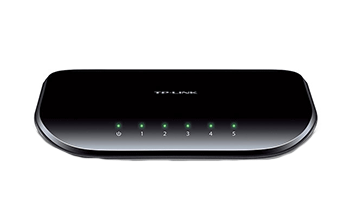What Is Ethernet SwitchPosted by John Able on December 8th, 2017 We are sure that you have a basic understanding of networking. In a network, different PCs are connected together with the capacity to share data and peripherals like printers. There are a few pieces of hardware that can work as a controller to support those connections, but the "smartest" one is an Ethernet switch. In order get the best Ethernet switches in the market you need have basic understanding of how a switch works. A switch gets data from every PC on the network, as "packets" of information that are communicated by every single connected machine. Once the switch gets a packet, it chooses where the information needs to be sent and forward it to the right destination. More or less, the switch is "self-learning." It develops a table of network addresses for all PCs and gadgets using the framework, so it can rapidly choose where data is originating from and its right goal. The switch will also decline to forward "bad packets," which keeps them from clogging up the resources of a network.
A switch will significantly speed up a busy network by acting as a savvy traffic cop, dealing with where information is to be sent and preventing unnecessary "crashes" between all of the information packets confusing the network. It also allows connection of numerous gadgets that can be accessed by all users. Is An Ethernet Switch Different Than A Router Or Hub? A hub is fundamentally a stupid switch. When it gets information packets from one PC or device, it just broadcasts all of the information to the majority of alternate hubs on the network with no filtering, regardless of whether they're the expected receivers or not. Normally, this places major strain on the network's transfer speed (and consequently, its general speed) since numerous more packets are being sent forward and backward simultaneously. Hubs are not used as much as they used to be since the cost of switches fall in recent years, and numerous makers don't offer them any longer. A switch plays out a whole different function, by acting as an interface between networks. A switch is frequently used as a part of conjunction with a modem to connect a home or business network to the Internet, making access for every associated PC and devices. As a result, it truly is connecting two networks, your Ethernet and the Internet. A few switches can work as a "limited traffic cop" by sending incoming traffic only to specific IP addresses on your network. But they have none of the inward network brains of a switch.
Types of Ethernet Switches: Ethernet switches can generally be arranged into three different classes: unmanaged, managed and web-smart. Unmanaged switches are usually cheap and simple to use. They're plug and play gadgets, and are regularly found in home networks or small businesses. They basically work as a traffic cop as we’ve discussed above and are ideal for networks that don’t have administrations. Managed network switches allow some of the advanced functions that we’ve discussed, such as organizing client activity, portioning a network, connecting different types of networks and observing traffic as it goes through the framework. They can optimize a network's speed and usage of resources and are managed by using a command line interface. Managed Switches are ideal for large company data centers but they are not ideal for office or home networks. Conclusion Before buying, you need to get a basic understanding of different types of best Ethernet switches that are available in the market. After reading this article you’ll be able to get an understanding about your needs and choice that will suit your needs better. You can pick the one that will serve your purpose better. If you still have any confusion about switches then our guides will always be there for you have a good understanding of tech gadgets. For more details, click here. Like it? Share it!More by this author |




